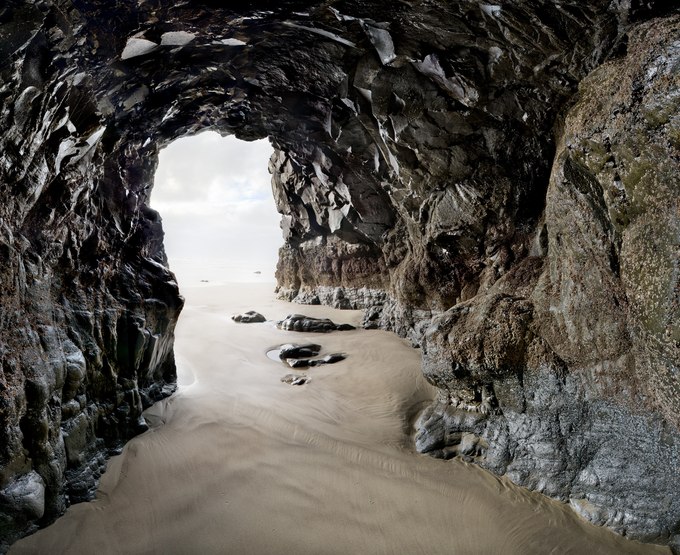Where the sea meets the beach, waves funneled into this cave. During the brief lull between waves, I entered to understand what a sea cave looks and feels like when the ocean rushes into it. A surging swell raised the water level; waves rinsed the layer of barnacles attached to the lava walls. Through the cacophony of countless air bubbles bursting, the waves gave voice to their journey's end. As the tide retreated, my footprints were erased, leaving faint, mottled patterns painted with sandstone, shale, and volcanic sediment. Then, I took this photograph as the ocean's reverberations abated, and the cave became silent.
Along this part of the upper Oregon coast, another type of flow – one that flowed from the east 16 million years ago – delivered sheets of inviscid lava across 200 miles. The lava overran an earlier layer of sedimentary bedrock to create 800-foot-high Cape Lookout, one of the most striking headlands on the Pacific Coast. Its erosion-resistant basalt eventually succumbs to surf that propels sand and gravel against its foundation. Exploding air pockets from breakers add to the sea's corrosive force, fragmenting rock, undercutting its cliff face, and creating sea caves.
A band of tan and blue-colored gooseneck barnacles securely adheres to the cave's right wall, which most directly receives the tide's twice-daily assaults with its nutrient-rich water. Though thought rare, this barnacle species has long inhabited West Coast intertidal rocks and sea caves, and oral histories tell us these crustaceans served as food for indigenous peoples from Vancouver Island to California.
- James Baker

